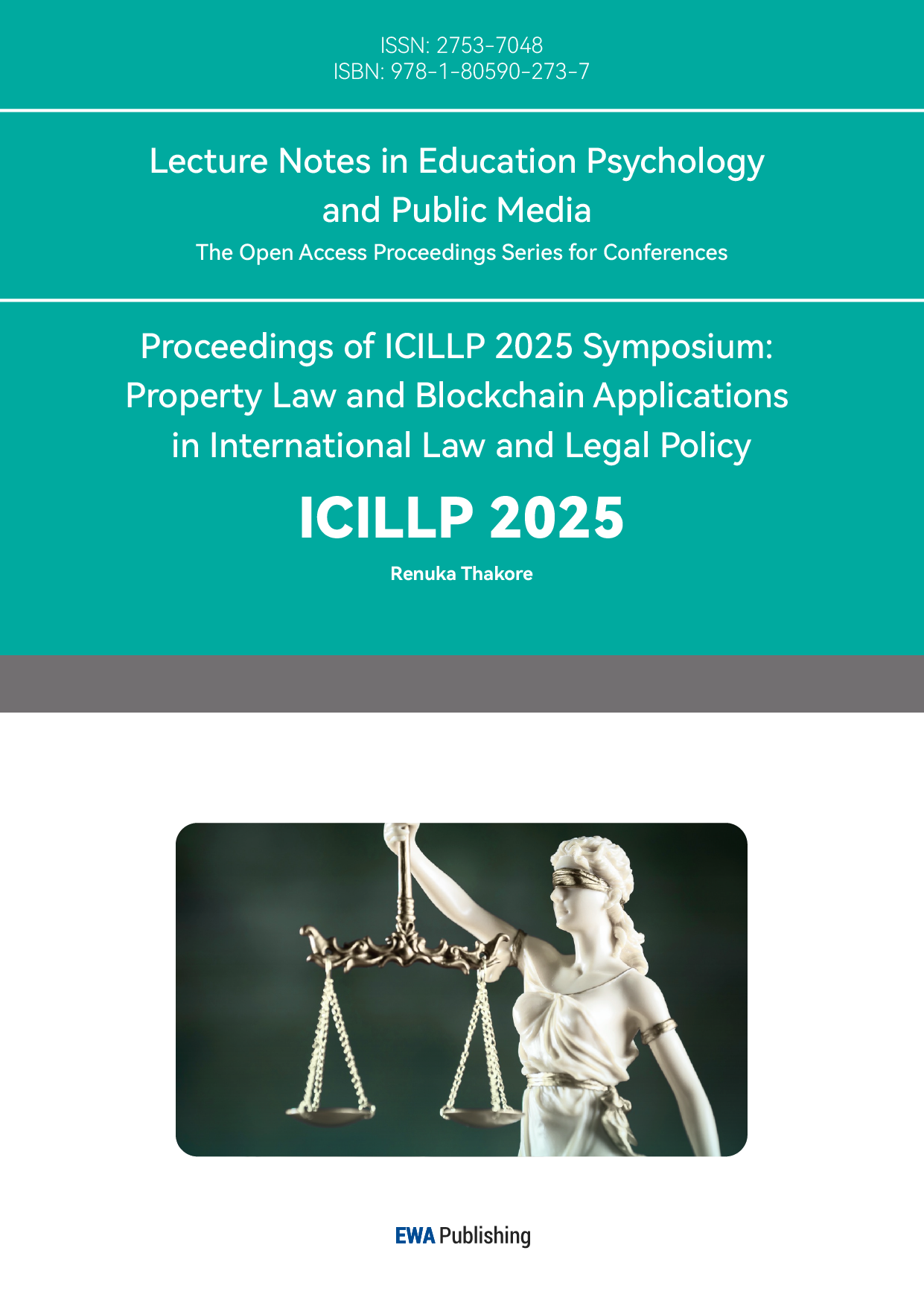References
[1]. American Banana Co. v. United Fruit Co., 213 U.S. 347 (1909)
[2]. DAI Long. Study on the Extraterritorial Enforcement of China’s Antimonopoly Law [J]. , 2010(5): 127-137.
[3]. United States v. Aluminum Co. of America et al., 148F. 2d 416, 444 (2d Cir. 1945).
[4]. Copperweld Corp. v. Independence Tube Corp., 467 U.S. 752 (1984)
[5]. Du, T. (2019). Distinguishing extraterritorial jurisdiction and extraterritorial application in transnational antitrust civil litigation: Perspectives from recent Chinese and American cases. Journal of International Economic Law (Xiamen), 1, 72–84.
[6]. An, J. (Ed.). (2007). Interpretation of the Anti-Monopoly Law of the People's Republic of China. Law Press China. p. 13.
[7]. Zhou, H. C., & Tang, G. Q. (2011). Coordination of jurisdictional conflicts in the extraterritorial application of antitrust law. Journal of Henan Administrative Institute of Politics and Law, (2), 59.
[8]. Timberlane Lumber Co. v. Bank of America, 574 F. Supp. 1453 (N.D. Cal. 1983)
[9]. Yu, X. (2016). Legal application of anti-monopoly tort liability involving foreign elements: Concurrent commentary on the legal application in Huawei Technologies Co. v. InterDigital monopoly case. Journal of Hebei University (Philosophy and Social Science Edition), 41(3), 143–151.
[10]. Ma, C. (2012).On the extraterritorial application system of China’s Anti-Monopoly Law—Lessons from the U.S. and EU experiences.Journal of Northwestern Polytechnical University (Social Sciences), 32(3), 25–27.



